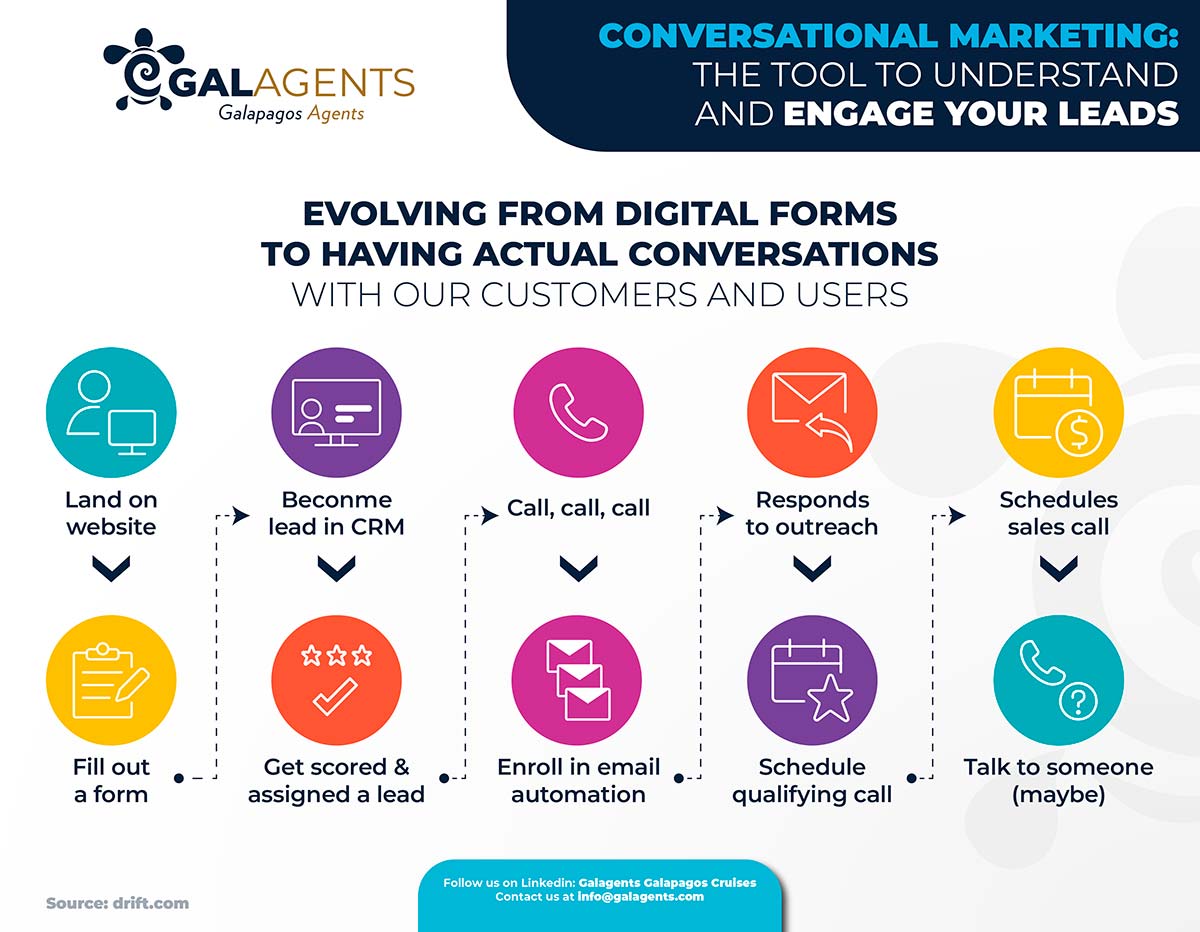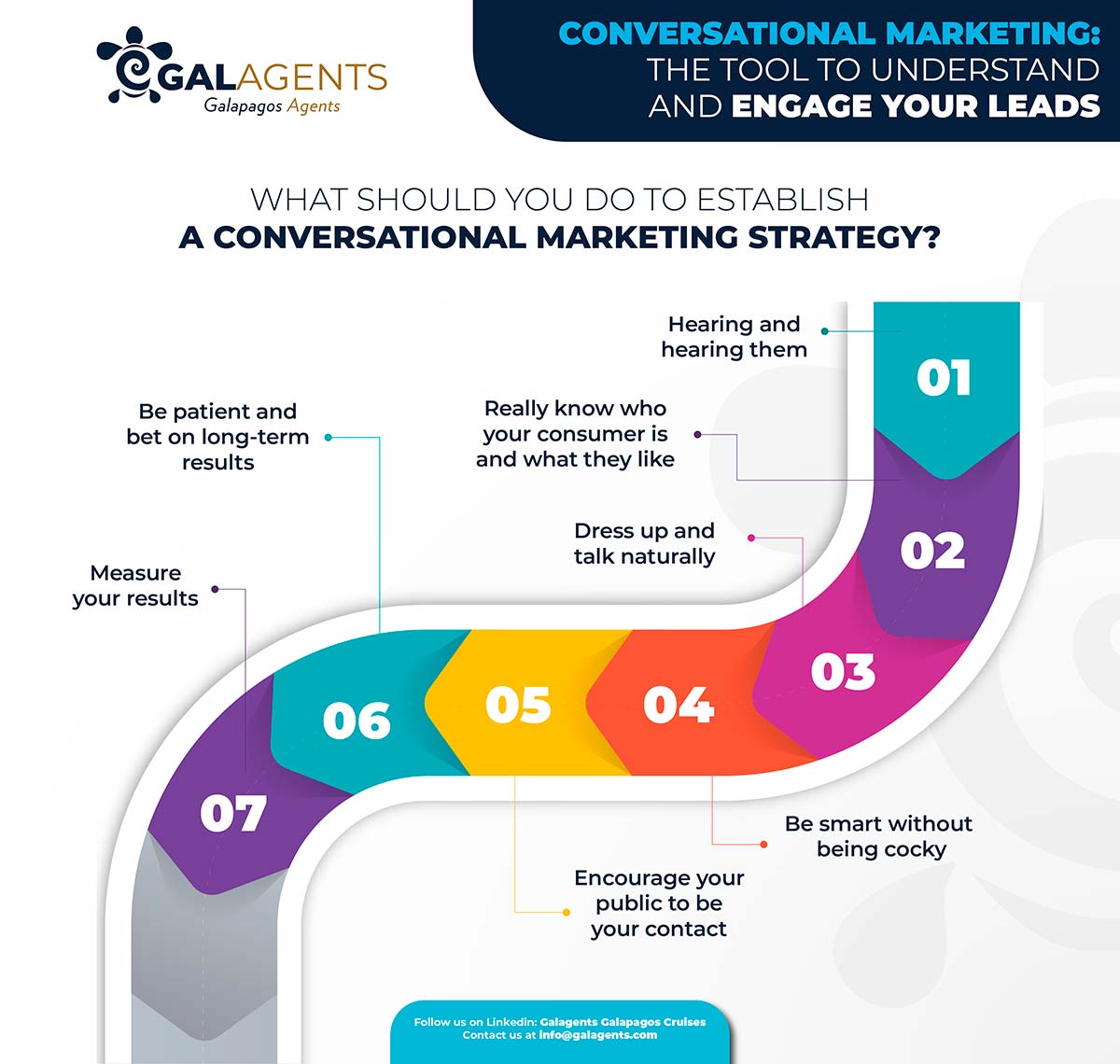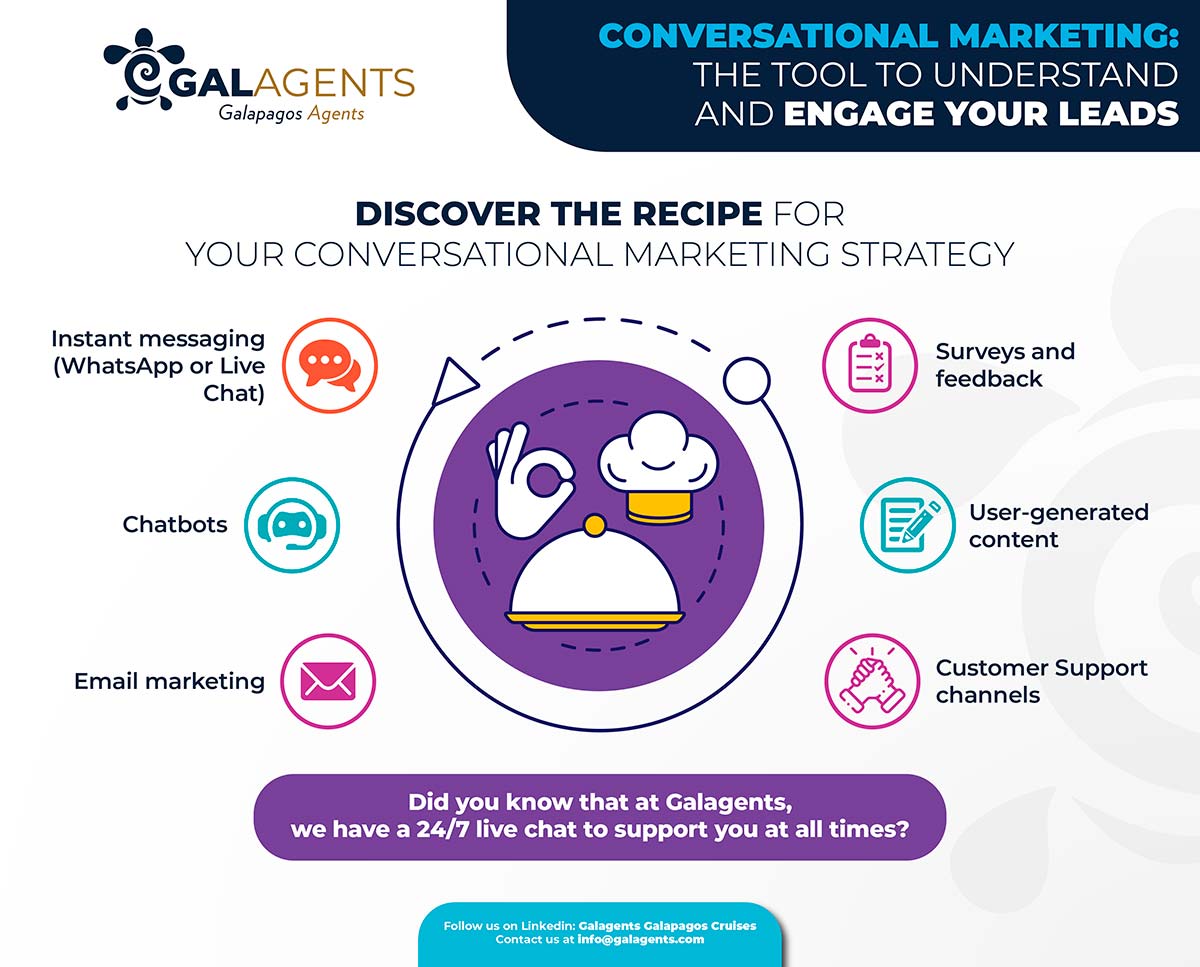It’s widespread that clients get fed up with brands because they feel unheard and unattended. Sometimes, it is almost impossible for them to get accurate information immediately or find a way to talk with a representative.
As businesses, we must take care of our client’s needs while getting and nurturing leads until we make them clients. Ultimately, our goal is to have a community of clients that are fidelity to our brand and products. They are our most effective promoting and marketing tool.
But, you may wonder what you can do, can’t you? Well, keep reading and get all the info you may need to know about Conversational Marketing.

An effective tool of the Inbound Marketing Strategy
For some years now, inbound marketing has been an effective way to get the attention of potential clients and deliver accurate information through digital content. This strategy has helped businesses get leads and nurture them across the sales funnel. However, inbound needed to become more efficient and fast-paced. Therefore, a new tool appeared: Conservational Marketing.
Conversational marketing is establishing conversations with our clients and digital users, either individually or in groups, in real-time. We answer their questions and hear them, which helps us strengthen our relationship with them. Also, it fast-paces the journey of our users through the sales funnel.
Evolving from digital forms to having actual conversations with our customers and users
According to Drift, people enjoy talking via texting because it is quick, simple, and seems like a conversation. Then, it’s not surprising that throughout 2021 people have been communicating with brands through online live chat (61%), phone and/or video call (58%), and email (50%).
Nonetheless, many businesses still use the following method to communicate with their clients and leads.

Not in vain, yearly demand for immediacy has increased by 64% on average. Thus, what do we need to do?
Basically, we need to build and reinforce relationships with our buyers and leads by establishing authentic and personalized experiences in our digital channels through Conversational Marketing.
What should you do to establish a Conversational Marketing strategy?
As soon as you decide to design a Conversational Marketing strategy, you need to consider these key points:
- Hearing and hearing them: it’s the key to establishing a good conversation by listening sincerely to what your customers want and need. In that way, you can offer them the correct answer they are looking for.
- Really know who your consumer is and what they like: A good conversation is based on understanding the topics the other person is interested in. So, research your audience through social listening tools.
- Dress up and talk naturally: You need to sound and be friendly to them and show them you’re here for them. Otherwise, they feel you’re faking. So, use the right tone of voice depending on the channel and to whom you’re talking.
- Be smart without being cocky: Gives them valuable content without presumptuous or self-promoting you too much.
- Encourage your public to be your contact: Engage them to the point that they decide to follow you and interact with you actively on all your channels.
- Be patient and bet on long-term results: Don’t be the pushy salesperson everyone hates. Promote your brand and what you do but subtly. Focus on delivering the answers your user needs; sometimes, you can promote yourself.
- Measure your results: That’s the mantra in every marketing action to be able to learn and grow.

Discover the recipe for your Conversational Marketing Strategy
Cooks usually change food recipes to add a personal touch. The same is what you need to do with the following Conversational Marketing recipe. Choose the tools that best fit your business and clients.
- Instant messaging helps you establish a more intimate connection with your audiences. For example, WhatsApp is a personal and close way to communicate with clients and leads. That’s why many brands use it to close the communication gap with their customers.
- Chatbots are artificial intelligence solutions capable of having highly personalized conversations. Although talking to a robot may generate rejection, it can be an excellent asset if you map and answer the most frequent questions your users want to get. The following video gives you a sneak peek of a seamless chatbot.
- Email marketing is one resource that adapts to the new times and remains as compelling as ever. Look for models based on opt-in and with highly personalized content. And, of course, never stop responding to emails from your customers or potential stakeholders.
- Surveys and feedback are effective ways to listen to your user; as we’ve said, it’s the most crucial part of conversational marketing. If you want to know what your users think, make it very easy for them to tell you, and it must be intuitive and give them a good UX.
- User-generated content is the best way to kill two birds with one stone. On the one hand, you will have content that generates trust; on the other, you will make your customers feel you care about them.
- Customer Support channels are an excellent opportunity to start conversations. Be sure to give quick answers, be decisive and never lose your patience.

Do you want to download these infographics? Do it here
For example, at Galagents, we offer a live chat with our customer service agents 24/7, so our users can talk with them every time they need support in using our website, getting updated availability of our boats, and as a first contact before being referred to one of our sales agents.
No matter which option you choose in your conversational marketing strategy, the most important thing is to let your consumers and leads know that you care about them, understand them, and are looking forward to solving their pains by being accessible to them at all times.
Sources:
https://www.iebschool.com/blog/que-es-conversational-marketing/
https://resources.esmartia.com/blog/conversational-marketing-que-es
https://www.cyberclick.es/que-es/conversation-marketing
https://www.drift.com/conversational-marketing/

